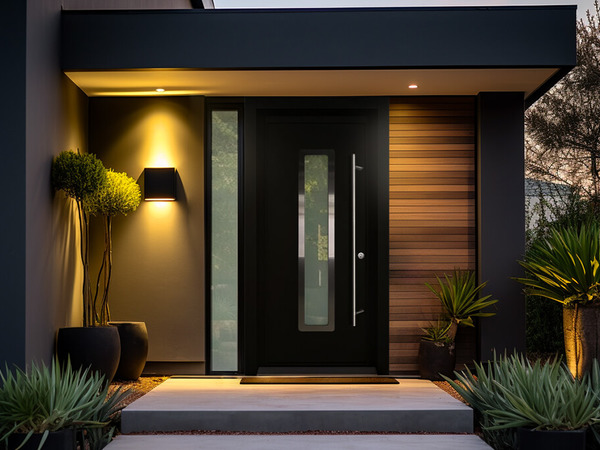
Introduction
Exterior doors are essential to any home or apartment, providing functional and aesthetic benefits. Quality and reliable doors are a long-term investment for your property, as they offer protection against harsh weather conditions, dust, moisture, noise, and intruders.
Be that as it may, a front door should never be an impulse purchase. So the most popular query is how to choose it. However, there are several factors to consider when selecting it. Here is an easy-to-understand buying guide for you: we will explain what features the ideal door has that are durable, reliable, and energy efficient.
What is an Exterior Door?
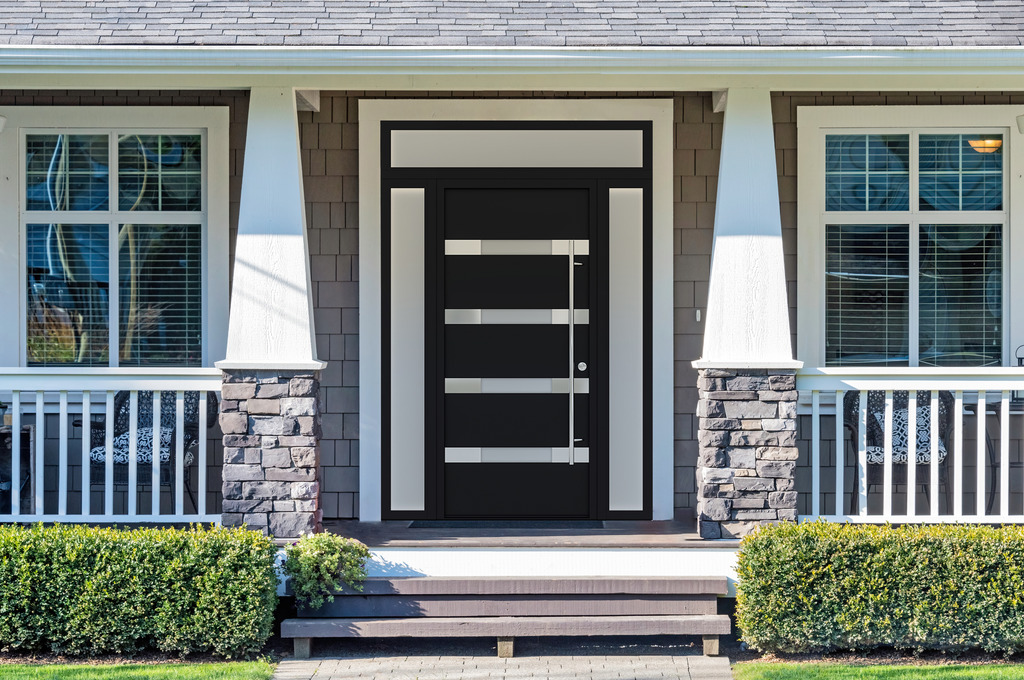
The exterior door is a transitional link between the interior of the house and the outside environment. It is designed to protect from external influences, provide security, and add aesthetic appeal to an apartment, cottage, or office building.
The Belldinni door is an excellent option, as it features the following:
-
Galvanized steel frame.
-
Translucent frosted glass.
-
Thermal breaks and seals that provide heat insulation and soundproofing.
-
Stainless steel threshold.
Types of Entry Doors
French Exterior Doors
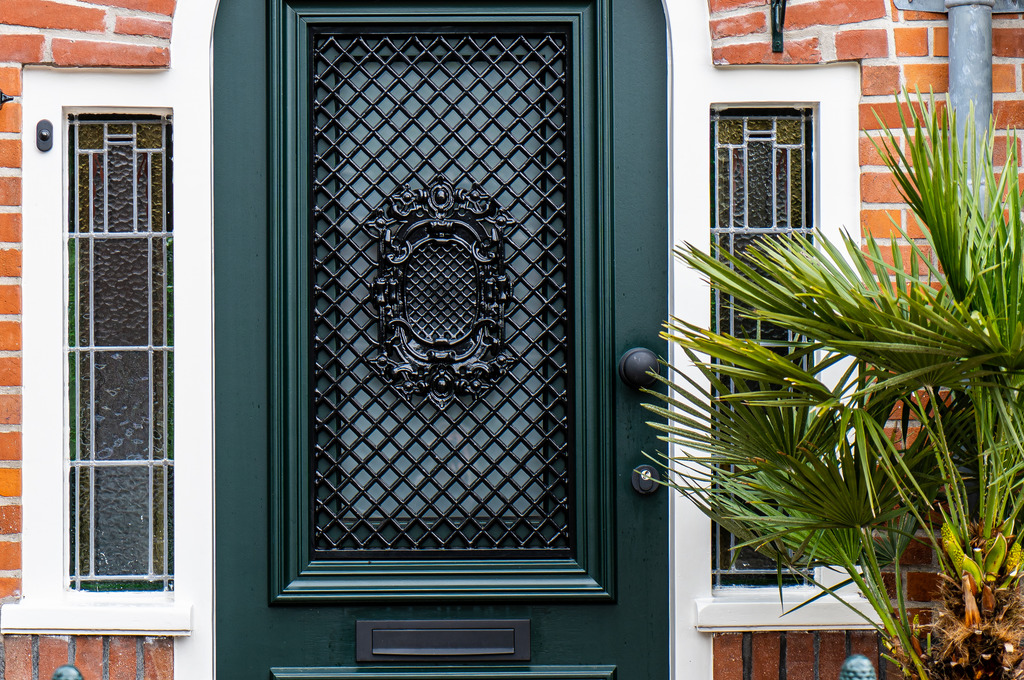
The French doors by Belldinni combine modern design, quality materials, and durable finish. They are equipped with glass inserts that allow light to enter the room. French doors consist of two slabs that swing outwards or inwards. Typically, one door remains fixed and locked, serving as the passive door, while its counterpart is actively used for entry and exit. However, for occasions that call for a grander opening, the passive door can be unlocked and opened alongside the active one to create an expansive entryway.
Screen Doors
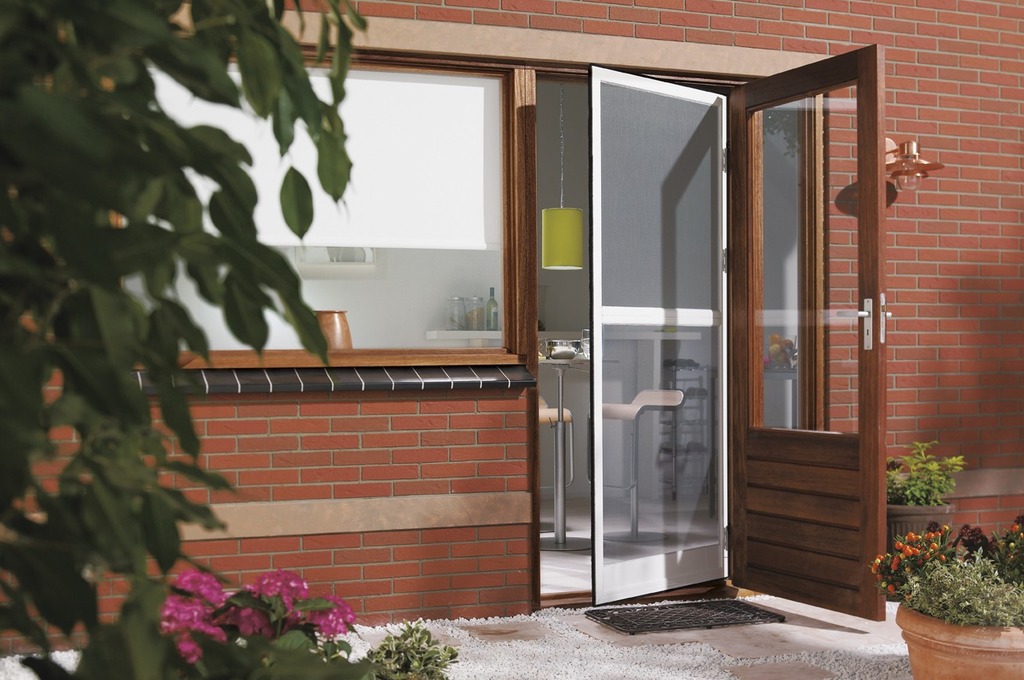
Screen doors are secondary exterior doors installed in front of the primary door to allow ventilation while keeping insects and debris out. They are typically made of a frame fitted with a mesh screen.
Security Doors

Consider installing a secondary security door for an enhanced level of home protection. These doors are constructed from robust metal and may include screens, glass, or transparent inserts within the metal framework. These are strong doors designed to prevent unauthorized entry. They often feature heavy-duty locks.
Often crafted with intricate designs, security doors fit over your main entry door, adding barrier and lock. This feature proves advantageous when interacting with visitors such as delivery personnel or neighbors, as you can communicate through the locked security door without fully opening your home.
Sliding Doors
Sliding doors are a space-saving solution that operates by sliding along a track instead of swinging open. They are famous for their sleek design and are commonly used for patios or balconies.
Sliding doors serve not only as an entrance to your home but also as a means to let a significant amount of natural light flood your room, maintaining a bright and welcoming atmosphere within your living space.
Storm Doors
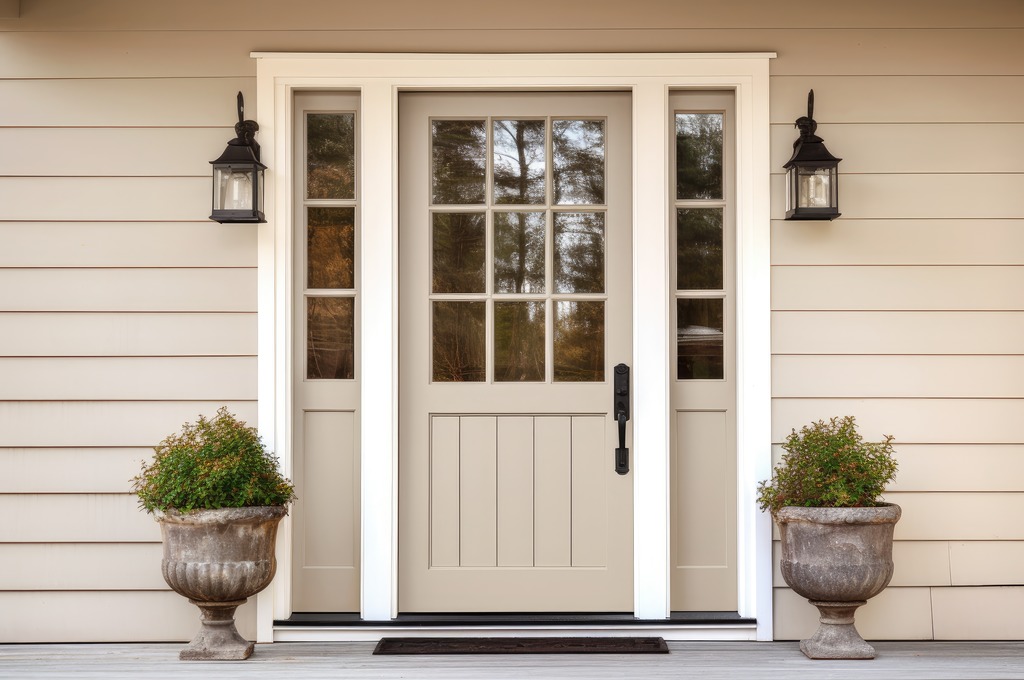
Storm doors are not standalone but essential when selecting your main entryway. Mounted on the exterior of your entry door, they typically blend metal and glass materials. Their purpose is twofold: they offer an extra layer of insulation and safeguard your primary door, which is particularly beneficial in regions with severe weather conditions, including heavy snowfall. Like security doors, storm doors can stay shut when you open your main door from the inside, enhancing your home's security.
Prehung Vs. Slab Exterior Doors
Prehung doors come with everything needed for installation, including the frame and sometimes even pre-installed hardware. Slab doors are simply the door itself, requiring a separate purchase of a frame, hinges, and other hardware.
Exterior Doors Sizes
The capacity of our factory allows us to produce slabs of different sizes. Detailed information is presented in the table below.
|
Height, inches |
80, 82, and 96 |
|
Width, inches |
36, 38, 48, 50, 62, 64, and 68 |
Belldinni doors are 2-1/16" thick.
Door Construction
Solid Core Doors
Solid core doors are made from a single, homogeneous piece of material, usually wood, although metal is also possible. This monolithic construction contributes to their exceptional strength, although the result is a heavier door. These doors require a significant investment, but their durability ensures they will last for years.
Hollow Core Doors
Hollow core doors have a solid frame enclosed in a solid outer casing. The design provides voids inside, which gives the door a lightweight feel. Although they are not the best choice for entry doors due to their lack of strength, soundproofing, and thermal insulation, they are often chosen for garage or patio doors due to their ease of use and lightweight construction.
Glass Pane Doors
Doors with double-glazed windows look elegant, allowing you to turn a dark corridor into a bright and cozy space and create a convenient opportunity to observe what is happening in the yard. Glass sizes can vary depending on the front door you choose.
Understanding Door Handing and Door Swing
When selecting a door, it is vital to determine the correct direction to open the door. To do this, stand on the side of the exterior door where the key is inserted.
Right-hand Doors
Right-handed doors have hinges on the right side when you face the door from the outside. The door handle is on the left.
Notice that when determining the handing of a door from the keyed side, if the hinges are on the right and the door swings inward upon being unlocked, it's considered a right-handed inswing door.
Conversely, if you need to pull the door open and the hinges are on the left side, it's identified as a right-handed outswing door.
Left-hand Doors
Left-handed doors are the opposite, with hinges on the left and the handle on the right from the exterior perspective.
Thus, if you are standing on the keyed side of the door, the hinges are on the left side, and the door pushes after unlocking; it is a left-hand swing door. If the hinges are on the right side, it is also a left-hand outswing door.
Left/right-hand inswing and outswing door constructions are available for order.
Materials for Exterior Doors
Quality entry doors should be durable and reliable. Nevertheless, construction materials come in a wide variety, and some of these are combined or supplemented with additional elements, such as glass inserts.
Steel
Modern steel exterior doors are the strongest and most secure. They're also affordable and energy-efficient. We use galvanized steel to protect the slab from corrosion.
Wood
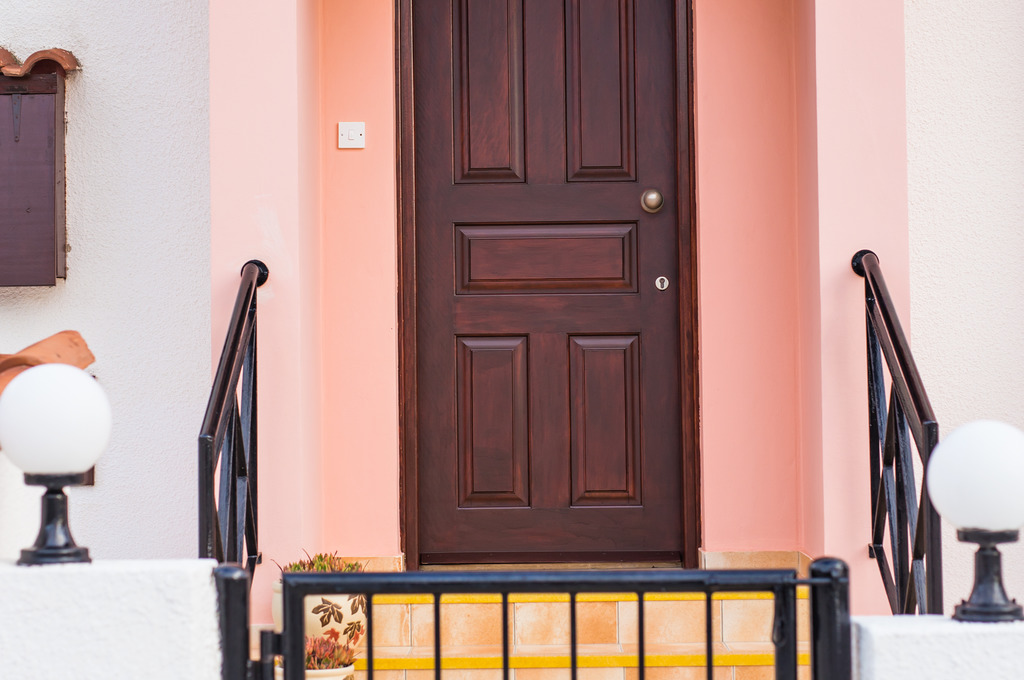
Wooden doors are the traditional solution. Many front doors are made of wood, emphasizing the beauty of the natural material. Different types of wood are used for this purpose: oak, maple, spruce, pine, walnut, and others. They also look aesthetically pleasing but require more careful maintenance.
Fiberglass

Fiberglass doors are durable, energy-efficient, and can mimic the look of wood. They are less susceptible to warping and require minimal cleaning.
What's more, fiberglass is also a dent-resistant material like steel. It can be painted in any color.
Door Panels
The panels act as a decorative ornament for exterior doors. They have a minimalistic look, allowing the slav to become an accent element outside a house or apartment. Some models can be decorated with one, two, three, or more panels.
Door Lites
Glass inserts are an original way to turn a standard door into a luxurious one. Located on the leaf, they serve as a beautiful decorative element and perform a practical function, filling the house with light. Of course, the number of lites, sizes, and shapes can differ.
Types of Glass
Many manufacturers use the following types of glass: clear, frosted, or low-E. We offer the best solution: translucent frosted glass tempered on both sides.
Exterior Door Hardware
The Belldinni set of hardware consists of a rail-type handle and 3D-adjustable hinges (Germany), ensuring a secure and reliable locking mechanism.
Questions to Ask Before Making Your Final Selections
Before purchasing an exterior door, consider the following:
-
Primary function.
What is the primary function of the front door? Is it a main entry door, a side door, a patio door, or a security door?
-
Security.
What are the security requirements? What level of security do you need? Are there specific locking mechanisms or door materials that you should consider to enhance protection?
-
Material.
What material is best suited for your climate and location? Materials like wood, steel, fiberglass, or aluminum each have advantages and disadvantages depending on the weather conditions they will face.
-
Energy efficiency.
What are the energy efficiency ratings? Does it have good sealing and insulation properties to help reduce energy costs?
-
Design.
What style and aesthetics are you looking for? Will the door complement the architectural style of your home? What color and design will match or enhance your exterior?
-
Budget.
What is your budget? Have you considered all costs, including installation and additional hardware?
-
Size and configuration.
What size and type of door do you need? Are you looking for a standard size, or do you need a custom size?
-
Warranty.
Is there a warranty or guarantee with the door? What does it cover, and for how long?
Conclusion
In conclusion, investing in a high-quality exterior door is wise for any homeowner or apartment dweller because it will pay off in the long run, providing years of comfort for you and your loved ones.

